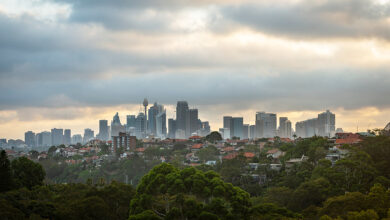China demand for iron ore fades

Warnings about the long-troubled economy of Australia’s largest export destination, China, are now coming thick and fast. The International Monetary Fund (IMF) last week pushed Treasurer Jim Chalmers to prepare by bolstering the federal budget’s bottom line, and Chalmers recently issued his own concerns about the outlook for China, as well as for Japan, Australia’s second-largest export market.
The COVID pandemic arrived at the end of a long housing boom that had underpinned China’s economy since the 2007-08 global financial crisis. The collapse of property giant Evergrande in 2021 triggered the ongoing crisis now plaguing China’s overheated property sector, the deep structural problems of which are hitting consumer confidence and now the country’s banks. At the same time, global inflation has wound back demand for Chinese exports.
There is now talk of major government intervention in the property sector, with Beijing proposing to buy up bankrupt properties to gradually increase its role in real estate from 5% of the market at present to 30%. Some speculate the proposal could cost US$280 billion (A$435 billion).
In the past, Chinese policymakers have stimulated the economy by delivering state-sponsored infrastructure projects, such as the vast national fast-train network, roads, airports and special economic zones, in the process boosting the iron ore market and price for such steel-rich construction. But such options have largely been exhausted, with little left to build.
Until now, resource exports have largely shielded Australia from China’s economic problems. But now iron ore — the historical backbone of our trading relationship with Beijing — is at risk, with the price beginning to slide from US$136 per tonne in January to US$108 as of last week, less than half its 2021 peak of US$221 per tonne.
The slowing economy and Chinese government policy are now creating something of a pincer movement, with the Chinese property and infrastructure boom over-reducing demand for iron ore, and China’s steel mills being forced to drastically reduce their carbon footprint. This means more demand for higher-grade iron ore where Australia falls short.
“The weak long-term outlook for steel demand from urban residential construction is consistent with the RBA’s previous assessment that growth in overall Chinese steel demand is likely to slow in the future and may be near its peak,” Reserve Bank economist Adam Baird said.
“Slowing overall steel demand in China could weigh on global demand for iron ore and, all else equal, its price.”
In its latest global assessment, the IMF stated that Australia’s economy is expected to grow by 1.5% in 2024 and 2% in 2025, below the 2.5% trend rate. Chalmers has also said the fall in iron ore price would mean a $9 billion revenue loss for Australia (BHP and Rio Tinto accounted for 25% of Australia’s corporate tax receipts in 2021-22).
“So that gives you a sense of the sort of magnitude,” Chalmers said.
This economic instability has shifted focus to the so-called “Pilbara killer”: the vast, very high-quality iron ore deposits, known as Simandou, in Guinea. Spanning more than 100km, Simandou contains the world’s largest untapped reserve of high-grade iron ore, estimated at more than 2 billion tonnes. The road to extracting the resources, far from the ocean in a mountainous country, is not an easy one, but it appears the construction of the mines, and a major railway through the jungle mountains, is finally coming to fruition.
As Chinese demand for iron ore has likely peaked, Australia’s golden goose — the remote Pilbara region of Western Australia that is home to the country’s major iron ore deposits — is suddenly looking a little ill. As Chalmers has noted, this is hitting Australians where it hurts: in the budget bottom line, and at a time when demands on government by an ageing population are only increasing.
Australia has dropped the ball when compared to other resource-rich nations such as Norway and Chile, which have created substantial sovereign wealth funds off the back of resources taxes.
Maybe it’s finally time for the long-mooted mining tax to be applied. And while Anthony Albanese is in the mood for some targeted protectionism, perhaps Rio Tinto, the largest foreign-based miner operating in Australia, is a good place to start.
Is it time for mining companies to pay more tax? Let us know your thoughts by writing to letters@crikey.com.au. Please include your full name to be considered for publication. We reserve the right to edit for length and clarity.





